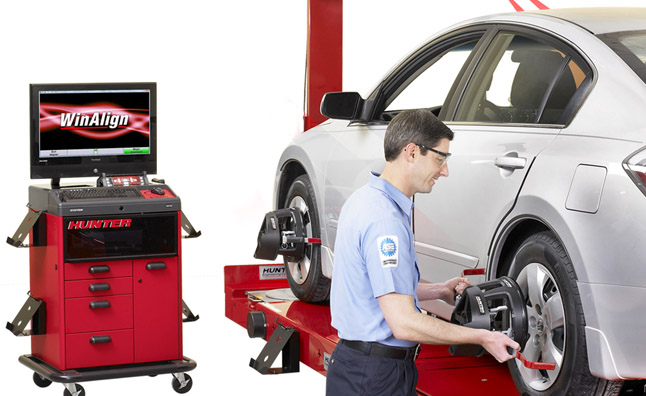Tires can be nudged out of alignment by accidentally hitting them against objects such as curbs and parking blocks, or by catching a center cement divider while making a miscalculated turn. Once a tire is out of alignment, its orientation on the vehicle is slightly off-center. Wheel alignment, in general, in seeking to get the tires on your car as perpendicular to the ground and parallel to each other as possible can correct this malposition. It is an adjustment an auto shop can make on a vehicle to ensure the tires are calibrated to point straight ahead.
The inclusive term ‘wheel alignment’ involves three main measurements — caster, camber, and toe. These measurements have standards that a technician uses as targets of adjustment. In other words, get as close as you can to the right measurement. Here, we’ll discuss these three measurements one by one.
The most widely discussed and controversial of the three elements is camber. Camber is the tilting of the wheels from the vertical when viewed from the front of the vehicle. Camber angle is the measure in degrees of the difference between the wheels vertical alignment perpendicular to the surface. The camber is positive when the wheel tilts outward at the top, if the wheel tilts inward, the camber angle is negative. Camber settings influence the directional control and the tire wear. Both positive and negative camber will lead to the wear of tires and suspension parts.
Perhaps the easiest concept to visualize is toe. Toe is a measurement of how much the front and/or rear wheels are turned in or out from a straight-ahead position from a top-down view – much like looking down at your toes and angling them inward or outward. Just like camber angle, the toe is negative when the wheel is turned in, otherwise, it is positive. The purpose of toe is to ensure that the wheels roll parallel. Improper toe adjustment will cause premature tire wear and cause steering instability.
Caster is a bit harder to conceptualize. It’s defined as the angle created by the steering pivot point from the front to back of the vehicle. A backward tilt is positive and a forward tilt is negative. Caster influences directional control of the steering and is affected by the vehicle height. So, overloading the vehicle or a weak or sagging rear spring will affect caster.
Vehicles are designed with manufacturer’s settings for a reason. Countless hours of research and development go into designing suspension components and typically those numbers are the best to go with. It is just like the result if you gave an Olympic long-distance runner two different types of athletic shoes to run his next race. Chances are his performance would suffer. The same can be said about your car’s driving potential if its alignment isn’t correctly positioned-You may end with either an expensive or dangerous driving. If your alignment isn’t correct, the car will react differently to than the manufacturer intended and the more time you drive your misaligned vehicle, the more damage you’ll do to the suspension and steering components. In addition, it’ll result in premature tire wear and decreased gas mileage. Moreover, driving a vehicle without proper alignment poses threats to driving safety. A car that is out of alignment can pull or drift away from a straight road, resulting in a possibly fatal situation. Also excessive tire wear can lead to tire blow-outs and poor traction, which also has potentially disastrous consequences.
After wheel alignment, you’d better to re-calibrate your SAS. If you encounter any trouble with the steering system, don’t be annoyed, with MaxiCheck Pro at hand, all problems can be diagnosed easily and quickly. It can either works as a single application tool or in conjunction with all wheel alignment systems to save both money and time. For more information, please browse our website www.autointhebox.com or click the product image below directly.

What is wheel alignment and why do you need it
by
Tags:
